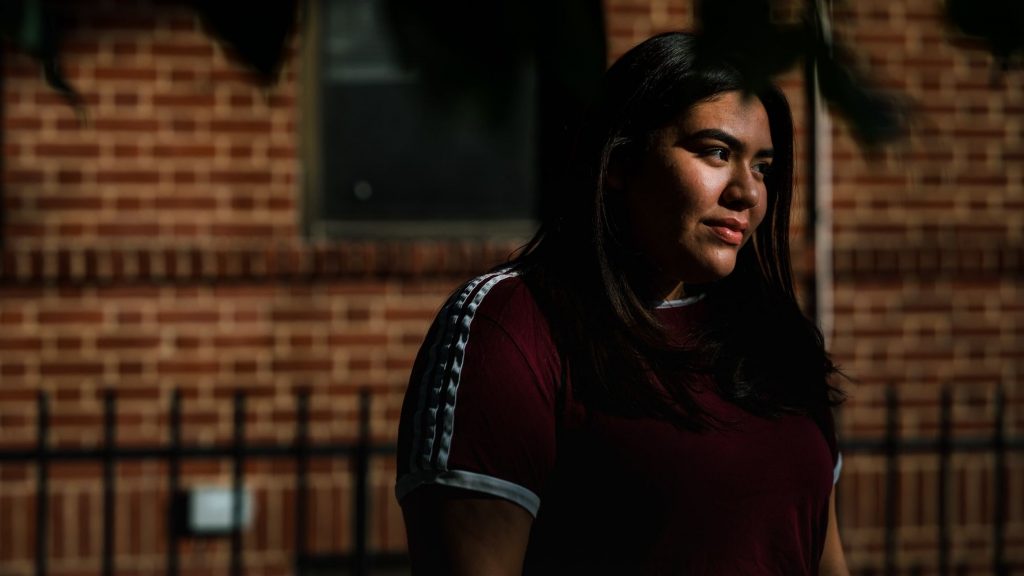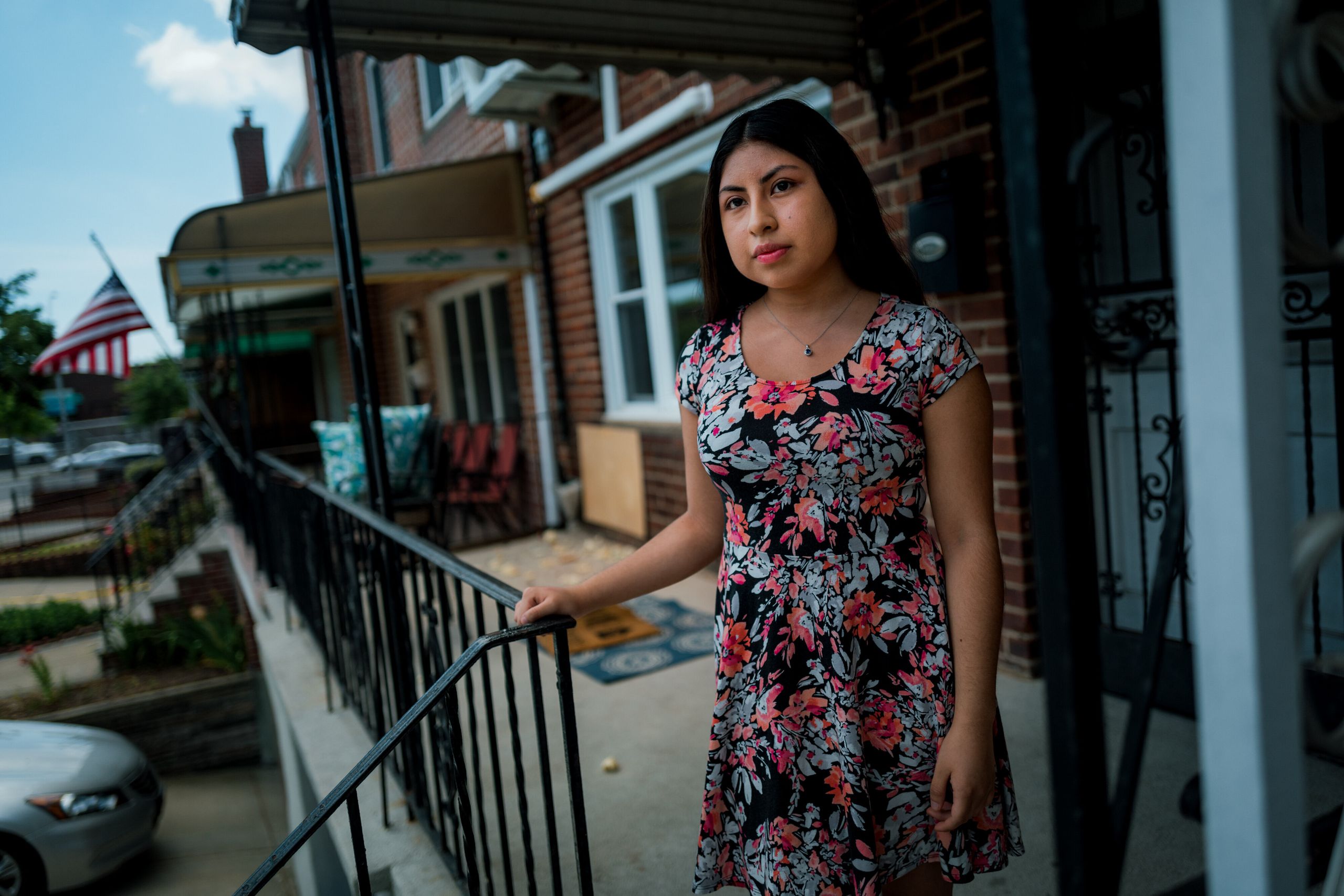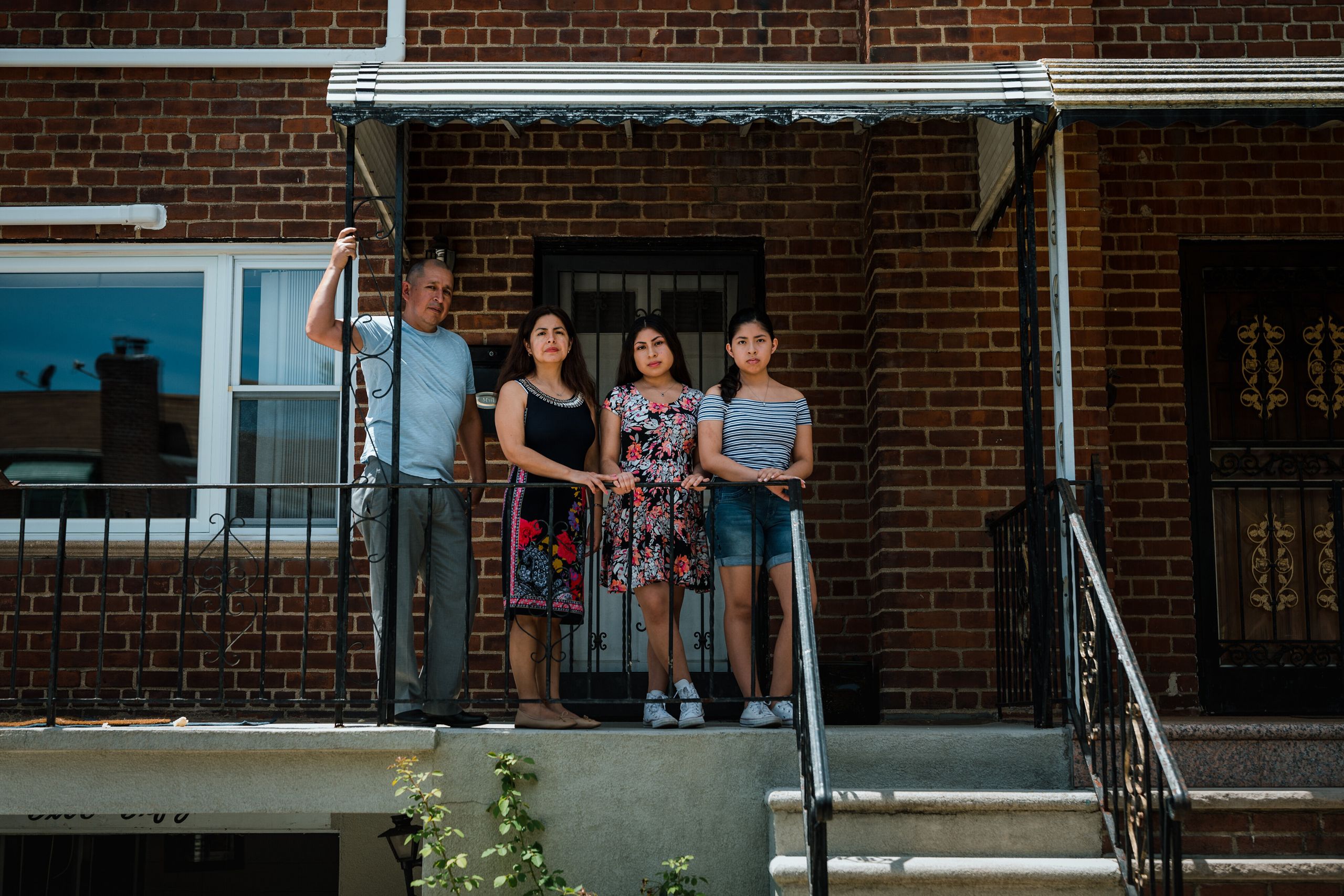
This story about a school in Queens was produced as part of the series Critical Condition: The Students the Pandemic Hit Hardest, reported by HuffPost and The Hechinger Report, a nonprofit, independent news organization focused on inequality and innovation in education.
By April, Odalys Garate, 18, was supposed to have made it through the hard part. She, her mother and her two older sisters ― everyone she lives with ― had all recovered from COVID-19. She had made it through the fevers, coughing fits and the night she had so much trouble breathing that her mom, in a panic, sobbed by her side. But in many ways, Garate still felt debilitatingly sick.
The sirens she heard traversing her neighborhood of Corona, Queens, at all hours of the night made her feel ill. She lost her appetite watching a long line of hungry people waiting outside for hours to get food from a pop-up food pantry. Seeing ambulances stop outside her building, wondering which one of her neighbors it might be coming for, gave her stomachaches. Five family friends died, one after the other.
Overwhelmed and depressed, Garate stayed underneath her covers for nearly three weeks straight.
“I just wanted to be in bed all day. And I’m not one to be in bed all day,” said Garate, who lives in a one-bedroom apartment with her two older sisters and mother. “I felt like I had insomnia. I didn’t even have energy to sleep.”
Garate has not just been a teen living through a pandemic. She has been a teen living through a pandemic in one of the hardest-hit neighborhoods in the hardest-hit city in the country.
Staff members at her school ― the Renaissance Charter School in the neighborhood of Jackson Heights ― say she is one of many traumatized students whose families have been deeply impacted by COVID-19. HuffPost spoke to seven students, parents and staff members from Renaissance, a K-12 school of about 600 kids, about their experiences over these past few months.
In Corona, 1 in 274 people have died from COVID-19; in Jackson Heights, 1 in 263 people have. Each neighborhood has had thousands of cases, according to the latest data. For weeks, overwhelmed hospitals were overflowing with patients.
The brunt of the pandemic has passed in the area for now, but school social worker Alison Rosow said the trauma lingers. She estimates that at one point, about 80% of the students in her caseload were sick or had sick family members. A handful of students lost grandparents, and several recent graduates lost parents. A school survey from May found that about 40% of responding families had had someone laid off or furloughed. Most of the school’s families are Hispanic, and many are immigrants.

For those three weeks in April, Garate retreated inwards. She stopped answering texts and FaceTimes from her friends. She couldn’t focus on the schoolwork she normally cared about. Her grades fell, but she felt numb to it. She turned on the TV and flipped through channels mindlessly, zombie-like, to pass the time. She stayed awake all night, anxious and sad and scared, and couldn’t get out of bed when the sun rose.
Her peers were in similar situations.
Tiffany Palaguachi, another senior at Renaissance, spent a month taking care of both of her parents and worrying desperately after her mother spent a week in the hospital, barely breathing. Junior Juliza Lema didn’t have any sick family members, but her family became so desperate for money that they started making diapers for her little sister at home. As she took on more chores and became increasingly anxious, her grades dropped drastically. One of Lema’s friends lost their mom.
All the while, classes continued. Kids attended school via video and sat for remote exams. A drive-in graduation ceremony took place for the seniors earlier this week.
“These kids are expected to do remote learning, but they were taking care of their parents. They’re depressed,” said Rosow, the only social worker in the school.
Rosow said she counseled several kids over text as they debated whether a parent should go to the hospital. In May, a majority of the students Rosow talked to were unable to sleep, even the ones who are typically diligent about routine.
She described counseling kids who were sick themselves. “I’m on the phone with them, they’re still coughing, still having issues breathing,” Rosow said in May. As of late June, some still had lingering illness.
The school’s principal, Stacey Gauthier, is worried that kids will face a whole host of new issues when they go back to school in the fall ― if they do.
“We have our share of families in temporary housing, 75% are free or reduced-price lunch. I’m worried we’re going to have a whole lot more,” said Gauthier, who has been the school’s principal since 2007. “The reality is we need more people. I need more social workers.”

The word the students use the most to describe the past few months is “scary.”
Tiffany Palaguachi, 18, used the words “scared,” “scary” or “terrified” 16 times over the course of one conversation.
Palaguachi spent late March and April taking care of her parents and younger sister, who all got COVID-19 while she remained healthy. For nearly four weeks, Palaguachi cooked them all breakfast, lunch and dinner, delivering each meal to their respective rooms. When she wasn’t cooking, she kept track of their medications, disinfected the bathrooms and updated relatives. She stayed up until 4 a.m. completing the homework she did not have time to do during the day, and then set her alarm to go off twice in the night so she could check on her parents and make sure they were still breathing.
Her mom’s condition grew worse over the course of a few weeks, then she ended up in the hospital. When they spoke on the phone, Palaguachi’s mom could hardly speak. Every conversation felt like it might be their last.
Palaguachi is still traumatized by the idea of her parents getting sick again, a month after recovery. She’s scared when her dad, a construction worker who just recently started getting hours again, leaves to go to work. She begs her mom, a teacher, to stay inside. Every time her mom mentions going to get something from the store, Palaguachi volunteers to go instead.
Even while ill, her mom couldn’t stop mothering. She would check to make sure Palaguachi was doing homework in the middle of the night under the guise of going to the bathroom. She would pester the teen ― who had lost her appetite ― to make sure she was eating enough. “She’s very loving and sweet, I know she’ll do anything for me,” Palaguachi, who sat in front of wallpaper that read “live, laugh,” said over video chat with a bashful smile and twinkling eyes.
She maintained her high 90s grade average throughout ― “there’s always a way to do something,” she said softly. Next year she plans to study biology on the premed track in college. She had planned to venture to Long Island for college, but with the pandemic, her parents wanted her to stay close. Part of Palaguachi wanted to stay close, too.
“Circumstances changed. I learned to accept that,” she said, resigned but matter-of-fact. “I’m more worried about my parents than I was before. I’m gonna be thinking about my parents for a while.”
In the early weeks of COVID-19, Rosow never knew what she was going to get when she spoke to a student.
There was the one who mentioned watching someone’s dead body being carried out of their building. Another who had several people close to them die. There were the students she would text every day to see if their parents were still alive.
Rosow video chatted with kids, sometimes from their cramped bathrooms so their family couldn’t hear the conversations. It was hard to tell who was going hungry. Some of her students and their families were so scared that, as of mid-May, they hadn’t gone outside since March.
Students who lived close to Elmhurst Hospital told Rosow about the constant sounds of sirens and helicopters. They described hearing the sound of dead bodies getting crunched into refrigerated trucks.
The worst was when a kid stopped answering her messages. She couldn’t go to their classroom and bring them to her office, so her imagination went to dark places. She’d never had anxiety before, but started getting anxiety-related chest pains.

Garate, the 18-year-old student, was cooped up and anxious inside, but she didn’t want to look outside either. She had seen the cops disperse a group of people who had been waiting for hours, sweaty and hot, hoping to get food from a local pantry. The police said they had violated social distancing rules. It was painful to watch. So was the news, given the suffering everywhere.
“It was too much,” Garate said via video chat, while sitting on the bottom bunk of the bedroom she shares with her sisters, who are 22 and 25. “Seeing everyone kind of feeling the same way. It was so overwhelming. I kind of didn’t want to know about the world at that point.”
Garate spent her time going between the bedroom and the living room, where her mom, a domestic worker, sleeps on the couch. Her mother spent April watching the news, mourning lost friends and lost work.
“When something affects my mom, it affects us all,” said Garate, who plans to study nursing next year at Lehman College. Her mom only recently started hearing from clients who want her to come clean their spaces. “She’s been happy that they remember her, I guess.”
Garate, who is asthmatic, feels lucky that no one in her immediate family got seriously ill from COVID-19. The experience of the virus, though, was terrifying. One night, at the peak of her sickness, she woke up panicked and struggled to breath. She could feel her asthma medicine, her nebulizer, not working. She sobbed in alarm. She wanted her mom to remain calm, to tell her everything would be OK, but instead her mom cried, too. Their panic grew and grew, until eventually, when they were all cried out, it passed.
“I never want to feel that again,” Garate said. “It’s so scary.”
Garate emerged from her fog of depression after her sisters became concerned and started prodding her to exercise with them, to bake with them, to do anything. She texted her friends to make amends — she had to explain why she had ignored their calls and disappeared.
After she explained, though, she says they understood. They had been going through it, too.
A HuffPost Guide To Coronavirus
Calling all HuffPost superfans!
Sign up for membership to become a founding member and help shape HuffPost’s next chapter





More Stories
How List Acquisition Helps Your Political Campaign Become Successful
Four escaped cows were caught
A simple administrative decision? | Press